Chairman’s
Foreword
The Road Safety Council (the Council) reached its 43rd Anniversary this year and it gives me great pleasure as the Chairman of the Council to present its Annual Report for 2016. In 2016, there were 20 000 additional registered vehicles on Hong Kong’s roads, to make a total of 817 568, a 2.5% rise. The number of fatalities in traffic accidents increased by eight percent from 122 to 132, whilst the total number of casualties was 20 132, similar to the previous year’s figure of 20 381. Taking into account the causation factors of traffic accidents in 2015 and the public concern, a priority - “Student Pedestrian Safety“ was added to make five main themes of road safety publicity in 2016. They are ”Elderly Pedestrian Safety“, ”Cycling Safety“, ”Anti-Drink and Anti-Drug Driving”, “Driving Attentively” and “Student Pedestrian Safety”.
Elderly Pedestrian Safety
Elderly pedestrians (aged 65 and above) remained the most vulnerable group prone to traffic accidents among all road users. Of the 132 fatalities in 2016, 46 were elderly pedestrians. The Council believes that the participation of the elderly and related organizations in road safety education is instrumental to our ongoing efforts. To raise awareness among the elderly, the Council partnered with Radio Television Hong Kong (RTHK) to hold a phone-in road safety quiz competition and produced a music video called ‘Be a smart pedestrian’ to disseminate the message of Elderly Pedestrian Safety in 2016. Forty teams from elderly centres were invited to participate in the competition. The final competition and award presentation ceremony of the quiz competition were successfully held in January 2017 and the music video also achieved a remarkable success as it has been widely circulated throughout the Internet.
Cycling Safety
In view of the growing popularity of cycling, “Cycling Safety” remained one of the Council’s key priorities. The Council continued to employ qualified trainers to deliver 70 cycling safety training courses to students of 30 primary schools, 18 secondary schools and 5 youth related non-governmental organizations. These courses were well received by the trainees, the parents and the participating schools. In addition, the Council alongside Police Road Safety Teams organized the ‘Wise Ride 2016 Safe Cycling Promotion Campaign’ at Pak Shek Kok Promenade.
Anti-Drink and Anti-Drug Driving
In 2016, “Anti-Drink Driving” remained the focus of the Council. Concerted efforts to publicize and educate road users continued with an encouraging year-on-year drop in the number of drink driving related traffic accidents. Stressing the serious consequences of drink driving, promotional banners and stickers, Television and Radio Announcements in the Public Interest (APIs) and social media reinforced the message of ‘If you drink, don’t drive’. In December 2016, the Council in partnership with traffic officers from the Hong Kong Police Force conducted an “Anti-Drink Driving” publicity campaign in Lan Kwai Fong promoting the message of “If you Drink, Don’t Drive!”. Drug driving related traffic accidents decreased in 2016, as a result of our collaborative efforts. Promotional banners on flyovers, bus body advertisements, APIs as well as social media were deployed to remind motorists of the tragic impact of Drug Driving on the community. In October 2016, the Council in partnership with Police Road Safety Teams organized the ‘No Drug and No Drink Driving Bus Parade’ at the Hong Kong Cultural Centre Piazza, attracting wide media coverage.
Driving Attentively
As driving inattentively has been the top causation factor for driver related traffic accidents over the years, the Council continued to promote “Driving Attentively” to remind drivers to stay alert whilst driving. Relevant APIs have been broadcast on TV and radio. In February and November 2016, the Council and Police Road Safety Teams jointly, on two occasions held the ‘Attentive Driving Carnival cum Light Rail and MTR Bus Road Safety Campaign’ in Tuen Mun. The events successfully spread the messages of driving attentively and road safety to the public.
Student Pedestrian Safety
In the past few years, the casualty rate for pedestrians aged 10 to 14 was comparatively higher than other age groups apart from senior citizens aged 65 or above. As a result, the Council launched “Student Pedestrian Safety” as one of the five main themes of road safety publicity. In September 2016, the Council held its 43rd Anniversary Ceremony cum “Student Pedestrian Safety” Kick-off Ceremony at Hollywood Plaza in Diamond Hill for the purpose of raising the alertness of “Student Pedestrian Safety”. The student pedestrian safety mini film “Starting Point of Road Safety” was also premiered in the ceremony. The event was completed successfully and attracted wide media coverage.
Looking Ahead
In response to several serious traffic accidents involving road works that occurred in 2016, the Council decided to enhance publicity to arouse public awareness on the importance of driving attentively, particularly at road works; and driving attentively in unforeseen circumstances by producing TV and radio APIs, mini-movies, posters and leaflets. Lastly, I would like to express my sincere gratitude to our Council members who again selflessly provided their professional advice and wholeheartedly supported our efforts in mobilizing the community to improve road safety. The Council faces increasing challenges with more vehicles on the road, but I am confident that with our concerted efforts we will make our roads safer. We will strive to achieve our vision – ‘Zero Accidents on the Road, Hong Kong’s Goal’ in collaboration with our community partners.
LAU Yip-shing Chairman Road Safety Council
About the
Road Safety Council
Our Profile
Building on the work of its predecessor, the Standing Conference on Road Safety, established in 1973, the Road Safety Council came into being in 1983 as a government advisory body to promote road safety in Hong Kong. The Council is chaired by the Deputy Commissioner of Police (Operations), with a membership drawn from seven government bureaux and departments and six non-governmental organisations. The body is committed to reducing the number and severity of traffic accidents in Hong Kong by formulating road safety initiatives and undertaking education and publicity programmes to encourage everyone to take up responsibility to ensure the safety of every road user. The Council is supported by two committees and two working groups – the Road Safety Campaign Committee (RSCC), the Road Safety Research Committee (RSRC), the Road Safety Publicity Strategy Working Group, and the Road Safety Council Annual Report Working Group. The Road Safety Publicity Strategy Working Group formulates publicity plans for examination by the Road Safety Campaign Committee and is its executive arm for road safety educational and publicity events. The Road Safety Research Committee is responsible for technical research with the aim of enhancing road safety. Each year, the annual report is prepared by the Road Safety Council Annual Report Working Group.
Our Vision
The Council will continue to pursue the Government’s vision of “Zero Accidents on the Road, Hong Kong’s Goal” to make Hong Kong one of the world’s safest cities for road users.
Our Mission
The Council strives to promote and maintain a culture of safe road use, achieved by identifying road safety issues and then initiating and implementing road safety programmes that reduce the number of traffic accidents and severity of injuries as well as enhancing smooth traffic flow. The Council works in partnership with other government departments, transport associations, road safety stakeholders, educational bodies and community organisations. Together, we aim to:
(a) |
Improve the behaviour of road users through education and publicity; |
(b) |
Improve the transport network to create a safer driving and road environment; |
(c) |
Explore new technologies and overseas legislation on road safety to develop effective accident prevention measures; |
(d) |
Build better roads and support the use of safer vehicles; |
(e) |
Engage the community to participate in improving Hong Kong’s road safety level through partnership programmes; and |
(f) |
Conduct research and analysis to identify traffic accident trends and risk areas. |
Publicity
 |
 |
 |
 |
 |
 |
 |
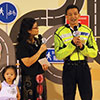 |
 |
 |
 |
 |
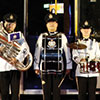 |
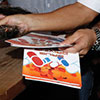 |
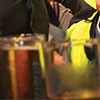 |
 |
Achieving our vision of road safety requires a concerted effort in multiple areas, especially publicity. In 2016, the Council strengthened its existing publicity tools and created new platforms to highlight the most pressing road safety concerns in order to raise the community’s awareness of road safety.
Elderly Pedestrian Safety
Publicity activities throughout the year continued to address the safety of elderly pedestrians. The Council worked closely with various stakeholders to conduct education and publicity campaigns in areas with relatively high numbers of traffic accidents involving elderly pedestrians. Much of this work was focused on pedestrian education. The elderly were reminded to use proper road crossing facilities, such as signal controlled pedestrian crossings, zebra crossings, footbridges and pedestrian subways. The Council held a phone-in quiz competition from June 2016 to January 2017 in conjunction with Radio Television Hong Kong, involving 40 teams from elderly centres in different areas of Hong Kong. Besides the quiz competition, a music video – ‘Be a Smart Pedestrian’ – was also produced to disseminate the message of elderly pedestrian safety. The video successfully reached a wide audience via different media, including the internet.
Cycling Safety
Cycling safety continues to be a concern among members of the public. The Council and the government promote cycling safety extensively through various publicity channels. The number of traffic accidents involving bicycles decreased 16.9%, from 2 511 in 2015 to 2 087 in 2016. Pamphlets conveying relevant traffic regulations, responsibilities of cyclists on the road and best practices when using cycling tracks are widely distributed to cyclists, pedestrians and employers of staff members who cycle to make rural and urban goods deliveries. A new Road Safety Bulletin entitled ‘Cycling on Cycle Tracks’ was published during the year to remind cyclists of cycling rules and safety tips when using cycle tracks. In September, the Council and the Police conducted a publicity campaign to promote safe cycling and the importance of wearing a helmet and other protective gear. The ‘Wise Ride 2016 Safe Cycling Promotion Campaign’ was held at the Pak Shek Kok Promenade, Sha Tin. The Council also organised a “Safe Cycling Training Programme” to strengthen primary and secondary students’ knowledge of cycling rules and safety. The Transport Department operates an internet-based Cycling Information Centre (CIC) (http://www.td.gov.hk/mini_site/cic/en/) to provide the public with convenient access to information on cycling, including safety. The CIC provides up-to-date information and reference materials such as riding rules, safety tips and laws relevant to cyclists and other road users to help ensure a safe cycling environment.
Anti-Drink Driving and Anti-Drug Driving
The number of drivers arrested in traffic accidents involving drink driving decreased four percent from 264 in 2015 to 254 in 2016, while the number of drivers arrested in traffic accidents involving drug driving decreased 46% from 13 in 2015 to seven in 2016. The Council is working to enhance public awareness of road safety through publicity and education. To remind people not to drive after drinking and to highlight the adverse effects of drugs on their driving ability, the Council continues its use of the slogans ‘If you drink, don’t drive’, ‘Drug Driving – Never Risk It’ and ‘Drug Driving – Zero Tolerance’ aiming to disseminate the messages to all sectors of society. The Council reinforces its anti–drink driving and anti–drug driving messages by deploying flyover banners, parking meter stickers and bus advertisements, and conducts publicity events with the Police in entertainment areas throughout the territory. The campaign against drink driving was maintained through a series of proactive programmes. Some 399 stickers bearing anti–drink driving messages were placed on parking meters throughout Hong Kong Island, Kowloon and the New Territories. In addition, anti–drug driving banners were placed on flyovers and footbridges above strategic roads with high traffic volumes. In partnership with the Police, the Council conducted a ‘No Drug and No Drink Driving Bus Parade’ at the Hong Kong Cultural Centre piazza and a publicity campaign in Lan Kwai Fong during October and December to promote anti–drink driving and anti–drug driving respectively. These publicity campaigns attracted wide media coverage. The “Be a Responsible Driver” Road Safety Bulletin published by the Council reminds drivers to comply strictly with legislative requirements on drink driving and drug driving. The Council will continue to conduct anti–drink driving and anti–drug driving publicity campaigns, and the Police will increase enforcement action to enhance safety awareness among the public and to change undesirable behaviour among drivers.
Driving Attentively
‘Driving inattentively’ has been the top driver contributory factor in traffic accidents for the past five years. Since 2014, the Council has promoted the theme of ‘Driving Attentively’ to remind drivers to pay more attention whilst driving. An API to promote attentive driving and discourage the use of mobile phones and electronic devices while driving has been broadcast on TV and radio since 9 January 2015. A new radio API was launched on 11 January 2016, reminding drivers to secure all goods and not to overload vehicles. In February and November 2016, the Council and Hong Kong Police Force jointly held an ‘Attentive Driving Carnival cum Light Rail and MTR Bus Road Safety Campaign’ in Tuen Mun. The event successfully spread the messages of attentive driving and road safety to the public.
Student Pedestrian Safety
An analysis of pedestrian casualties involved in traffic accidents revealed that the ‘killed’ and ‘seriously injured’ casualty rates for victims aged between 10 and 14 were higher than for any other age group, except for that over 65. The Council acted to enhance the road safety of the concerned age group by adopting ‘Student Pedestrian Safety’ as one of the main themes of its publicity campaigns. In September and December 2016, the Council held a ‘Road Safety Council 43rd Anniversary Ceremony cum Student Pedestrian Safety Kick-off Ceremony’ at Plaza Hollywood in Diamond Hill and jointly organised a ‘Sau Mau Ping Road Safety Town Open Day and Kowloon East Region Secondary School Student Road Safety Logo Competition Prize Presentation Ceremony’ with the Police at the Sau Mau Ping Road Safety Town respectively to promote road safety messages to students. It is of paramount importance to instil the concept of road safety in students. School education is an effective way to enhance students’ road safety awareness and reduce traffic accidents involving students. A holistic school curriculum comprising knowledge, skills and values/attitudes is provided for kindergarten, primary and secondary students.
Safe Driving and Health Campaign
Every year, to enhance the safe driving skills and health awareness of commercial vehicle drivers, the Transport Department runs a ‘Safe Driving and Health Campaign’. A wide range of services and activities were delivered in the 2016 campaign, focusing on four major themes: “Safe Driving Attitude and Behaviour”, “Respect Other Road Users”, “No Drink Driving and Drug Driving” and “Maintain Good Health Conditions”. The campaign programme included the dissemination of safe driving and health messages through radio broadcasts and other publicity channels, and the provision of free health checks to commercial vehicle drivers.
Targeted Safety Messages
The broadcast of APIs on various media platforms is an important and effective tool to promote road safety messages to the community. Several different APIs promote the Council’s five main themes – “Elderly Pedestrian Safety”, “Cycling Safety”, “Anti–Drink and Anti–Drug Driving”, “Driving Attentively” and “Student Pedestrian Safety” – and will continue to be shown on television. ‘Driving inattentively’ has been the top driver contributory factor in traffic accidents for the past five years. A targeted API highlighting the dangers to road users has been broadcast on TV and radio since 9 January 2015 to remind drivers to be attentive whilst driving.
The Council website
website:road_safety_campaigns2016.html The Council website contains a range of road safety features and provides online access to all the Council’s publications, useful statistics and hyperlinks. It aims to disseminate road safety information to the public effectively and recorded a daily average of 3 609 visits in 2016. The Council will continue to explore the use of all media platforms to best reach target audiences with tailored messages.
Education
 |
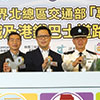 |
 |
 |
Safety Through Education
Education and publicity are very important in raising road safety awareness among the public. The Council performs its vital role to educate the public about road safety by identifying focal points, initiating curriculum-based programmes, creating course tools and coordinating the work of other community stakeholders. This multi-agency approach is particularly effective in wide-ranging community education initiatives across all age groups. The concerted efforts of government departments, non-governmental organisations, District Councils, schools and community centres produce a range of road safety education initiatives. Lectures and seminars are given by the Police to various groups and organisations at venues including the Road Safety Bus, Road Safety Towns, schools, centres for the elderly and other community venues. The messages delivered are tailored to specific groups and audiences. For example, road safety tips for the elderly were published and disseminated via the radio phone-in quiz and cycling training courses were delivered to students to improve their skills and road safety awareness. In addition, Road Safety Bulletins prepared by the Transport Department are regularly distributed to stakeholders to enhance understanding of traffic regulations and the importance of obeying traffic rules; to disseminate road safety messages; and to enhance the road safety awareness of all road users. For further information on the Road Safety Bulletins, please visit: www.td.gov.hk/en/road_safety/road_safety_bulletin/index.html
Youth Education
The Road Safety Towns are owned and managed by the Leisure and Cultural Services Department, while lectures on road safety are delivered by Police Road Safety Teams. The towns transform road safety education into an enjoyable experience, especially for the young and the elderly, in a pleasant and comfortable environment. The towns attracted more than 42 000 visitors of all ages in 2016. They are popular destinations for kindergartens and primary schools, as well as clubs, social service groups and elderly service organisations. Open days with interactive games and performances are regularly held to promote road safety themes.
Hong Kong’s Four Road Safety Towns are:
Pak Fuk Road Safety Town Pak Fuk Road, North Point Enquiries: 2565 5716 Sau Mau Ping Road Safety Town 56 Sau Ming Road, Sau Mau Ping Enquiries: 2379 1194 Sha Tin Road Safety Park 1 Kong Pui Street, Sha Tin Enquiries: 2637 6303 Tuen Mun Road Safety Town Wu Shan Recreation Playground, Tuen Mun Enquiries: 2463 7597 The Road Safety Bus delivers road safety messages to students at schools, residents at housing estates, children at youth centres and elderly at elderly centres. In 2016, the Bus received more than 18 000 visitors, underscoring the valuable role it plays in road safety education. In addition to raising road safety awareness and developing good practice, we continue to reach out to young people through various media platforms, including YouTube.
School Education
A holistic school curriculum comprising knowledge, skills and values/attitudes is provided for students in accordance with their developmental needs. Positive values and attitudes that the school curriculum stresses – such as responsibility, respect and care for oneself and others, civic awareness and being law-abiding – are indispensable personal qualities for students to be responsible and considerate road users. From pre-school education, students learn how to protect themselves and develop basic safety habits and awareness. Elements of road safety education, such as understanding and complying with safety regulations, cycling safety, proper use of public transport and common causes of traffic accidents, are covered in various Key Learning Areas and subjects in primary and secondary education. These include General Studies at the primary level, along with Physical Education and Moral and Civic Education at both primary and secondary levels. To promote road safety education, schools can make use of learning and teaching materials, including educational television programmes and lesson plan exemplars provided by the Education Bureau and web-based resources provided by the Council. Learning and teaching resources for further promotion of Student Pedestrian Safety have recently been developed and were uploaded to the EDB website in August 2016. In addition, corresponding life-wide learning activities such as the Hong Kong Road Safety Patrol and Safe Cycling Training Programme are conducted to broaden young people’s sense of road safety and strengthen their proper road use habits. Through such activities, students develop positive values and behaviour in road use and become responsible road users personally and socially.
Cycling Safety Education
With the continuing growth in the popularity of cycling for short distance travel, as well as recreational, environmental, health and other reasons, we attach increasing importance to the safety of people who cycle. In recent years, the Council, the Police and the Transport Department have promoted cycling safety through a variety of publicity and educational activities. As cycling becomes widespread in Hong Kong, we will continue to boost our efforts in this area. Major recent undertakings have included:
• Broadcasting the ‘Safe Cycling: Rules and Tips’ set of educational videos at public venues and sports institutes, which are viewed by the general public, including cyclists, motorists, pedestrians and students, and which provide a complete guide to proper and safe behaviour for all road users in relation to cycling. The set of videos is also available on YouTube and at the websites of the Transport Department and the Council. DVDs of the videos have been distributed to all local schools and higher education institutions.
• The distribution of leaflets and souvenirs during safe cycling campaigns held at cycling hotspots to enhance public awareness of cycling safety. For example, the Council and the Force jointly held the ‘Wise Ride 2016 Safe Cycling Promotion Campaign on Pak Shek Kok Promenade, Shatin. Leaflets and souvenirs were distributed along cycle tracks to disseminate safe cycling messages. Furthermore, safe cycling banners have been displayed on cycle tracks to remind cyclists about safe cycling.
• Delivering regular talks in schools and communities to promote the use of cycling safety equipment, and conducting a ‘Safe Cycling Training Programme’ to promote safe cycling among primary and secondary school students. A total of 70 cycling safety training lessons were delivered to 2 375 students in 30 primary schools, 18 secondary schools and five Youths NGOs to strengthen their cycling skills and safety awareness.
• Giving talks on cycling safety to students and organisations, visiting the four Road Safety Towns and providing practice sessions.
• A Road Safety Bulletin on “Cycling on Cycle Tracks” was published to remind cyclists of the rules and safety tips related to cycling.
Driver Safety Education
In order to enhance awareness of road safety and foster good driving behavior, ‘Driving Improvement Course’ has been introduced since September 2002. The Road Traffic Ordinance and the Road Traffic (Driving-offence Points) Ordinance require anyone convicted of a serious traffic offence or a traffic offender who has accumulated 10 or more Driving Offence Points within two years to attend a driving improvement course provided by a designated driving school. The course is also open to eligible drivers. Once all sessions and the course-end assessment are successfully completed, drivers receive a certificate and, when relevant, have their DOP reduced by three. In 2016, about 21 700 persons attended the course. About 93% of drivers who attended the course did not incur new driving-offence points within six months after the course. A new radio API was launched on 11 January 2016, reminding drivers to secure all goods and never overload vehicles. A Road Safety Bulletin on ‘Safe Use of Driver Assistance Systems’ was published to provide safety tips on the use of various driver assistance systems, and remind drivers to maintain proper control of vehicles while using those systems. In addition, a Road Safety Bulletin called “Be a Responsible Driver” was also published to disseminate a wide range of safe driving advice to drivers, including on driving near roadworks on expressways. The bulletins have been distributed to district offices, driving schools, and public libraries, and through other publicity channels. ‘Driving Inattentively’ has been the top driver contributory factor in traffic accidents for the past five years. In order to change the undesirable behaviour of drivers who cause accidents, HKPF formulated the Selected Traffic Enforcement Priorities 2016 to enhance drivers’ awareness of their responsibility toward the safety of every road user around them.
Elderly Pedestrian Safety Education
In Hong Kong, elderly pedestrians remain especially vulnerable to road accidents. The Council continued to focus many of its seminars, campaigns, bus parades, road safety messages and publicity and educational programmes on this demographic group, emphasising proper road use and crossing technique. In particular, we continue to broadcast the television API reminding the elderly to ‘Love Yourself, Love Your Family, Be a Smart Pedestrian’. The Council also worked closely with Senior Police Call to conduct education in areas with a higher occurrence of traffic accidents involving elderly pedestrians to remind the elderly to use proper road crossing facilities.
‘The Elderly Pedestrian Road Safety Quiz Competition’ co-organised by the Council and RTHK 5 was broadcast on RTHK 5 from July 2016 to January 2017. A music video
Road Safety
Measures
 |
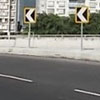 |
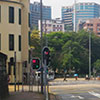 |
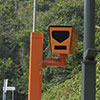 |
 |
 |
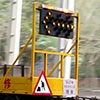 |
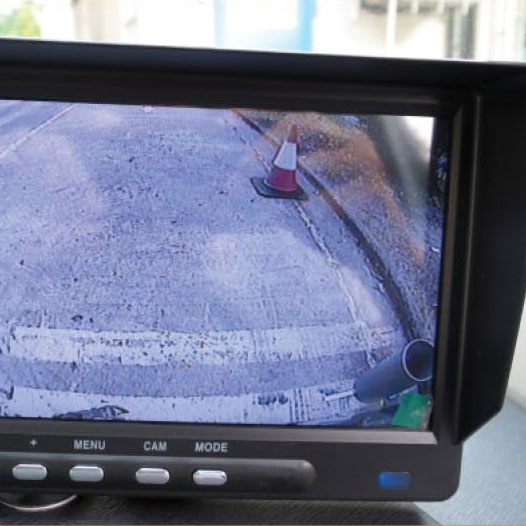 |
 |
The Council strongly holds that the number of road accidents and severity of casualties can be greatly reduced through the achievement of the road safety objectives of safer roads, safer road users and safer vehicles. Road improvement measures are implemented to provide a safer road environment to help minimise traffic accidents and road casualties. In the past year, various local traffic improvement measures have been implemented across all districts to enhance road safety.
Traffic Accident Investigation
In addition to local traffic improvement measures, the Transport Department has conducted route studies and investigations at 100 accident black spots to identify potential safety problems on roads and respond with a holistic approach to implement improvement measures that enhance road safety along the routes and at the black spots concerned.
The Use of Technology
The Transport Department is applying technology to enhance road safety. Among the approximately 1 900 road junctions at which traffic lights are installed to safely regulate and control vehicular and pedestrian traffic, 195 have been installed with red light cameras to deter drivers from jumping red lights. In addition, 125 speed enforcement camera housings were installed and came into operation to deter speeding.
Engineering Measures
Truck Mounted Attenuator
The Truck Mounted Attenuator (TMA), mounted at the rear of a roadworks construction vehicle, is designed to absorb the energy of a following vehicle colliding onto the stationary or slow moving construction vehicle so as to reduce the severity of damage and injury. To achieve this special purpose, TMA has to fulfil certain specific testing requirements. Moreover, the mounting vehicle must meet the requirements recommended by the manufacturer of the TMA and have a minimum weight of 11 tonnes. Back in early 2000s, TMA was introduced by Highways Department for local applications in escorting mobile operations on expressways, such as setting up and removing lane closures, road lighting maintenance, tree pruning and weeding, and have been proven to perform effectively in many previous traffic accidents. To further enhance road traffic safety and improve protection for road workers, by November 2016, Highways Department extended the use of TMAs in their roadworks operations from expressways to other roads with a speed limit of 70 km per hour or above. Apart from mobile operations, TMA is also specified for placement within a lane closure an appropriate distance ahead of physical working areas for additional protection. In tandem with these passive protective measures, promotion and education of attentive driving as well as traffic enforcement regarding speeding and dangerous driving are also crucial in making our road network safer.
Vehicle Examination
All vehicles registered in Hong Kong are required to undergo type approval and / or pre-registration examination to ensure they meet requirements stipulated in the Road Traffic Ordinance. All commercial vehicles, including goods vehicles, buses, light buses, taxis and trailers, are required to pass a pre-registration examination and roadworthiness examination each year. All private cars six years old or older are required to pass an annual examination. Vehicle owners have the responsibility to properly maintain their vehicles to ensure their roadworthiness. In October 2014, it became mandatory for all newly registered goods vehicles in Hong Kong to have a reversing video device fitted to provide a clear view to the rear, with the aim of further enhancing the safety of reversing goods vehicles. Moreover, electronic data recording devices (EDRD) became mandatory on all newly registered public light buses (PLB) in Hong Kong, from December 2014.
Legislation
and Enforcement
Traffic regulations address the mutual relationships among road users and also the relationship between road users and their surroundings. They aim to promote the safe and smooth flow of traffic on roads. Breaches of regulations are addressed through police enforcement. Enforcement action continued to focus on reducing traffic accidents and improving traffic flow. Experience has shown that our efforts have significantly enhanced road safety. In 2016 there were a total of 2 129 547 enforcement actions, an increase of 16% compared with 2015. Drink driving, drug driving, speeding and illegal road racing, etc. remain issues of concern.
Road Traffic (Amendment) Ordinance 2012
With a view to achieving continuous improvement in the safety and service quality of Public Light Bus (PLB) operations, the Road Traffic (Amendment) Ordinance 2012 (hereinafter referred to as ‘the Ordinance’) came into effect on 13 April 2012. The Ordinance stipulates a maximum speed of 80 kilometres per hour (km/h) for PLBs when travelling on roads. It also requires a sign showing the words ‘THE MAXIMUM SPEED OF THIS VEHICLE IS LIMITED TO 80 KM/H’ to be displayed in a conspicuous position in the passenger compartment of every PLB. In addition, the Ordinance mandates the installation of an approved speed limiter on every PLB by an authorised speed limiter installer. The PLB driver ID plate should also be displayed on every PLB.
The Ordinance introduces two further measures, which took effect later. From 1 December 2014, all new PLBs first registered on or after that date must be fitted with an Electronic Data Recording Device. In addition, with effect from 1 June 2015, applicants for a PLB driving licence are required to attend and complete a pre-service course for PLB drivers.
Selected Traffic Enforcement Priorities (STEP)
Road Safety is an operational priority for the Commissioner of Police. Selected Traffic Enforcement Priorities (STEP) has recently been comprehensively reviewed to align its targeting of offences with current traffic characteristics in respect of road safety, traffic flow and traffic offences that affect the community. Statistics gathered from STEP and traffic accidents are regularly analysed to identify areas in which improvement to traffic policies and enforcement strategies can be made. In 2016, there were over 16 000 traffic accidents involving over 25 000 vehicles, in which more than 20 000 persons were injured, including 132 persons killed and 2 492 seriously injured on Hong Kong’s roads. The aims of STEP are to change undesirable behaviour by road users that causes accidents or obstructs traffic flow, and make it everyone’s responsibility to ensure the safety of every other road user. In order to further reduce undesirable behaviour that constitutes STEP offences, we will focus on educating the public about road safety, risks caused by the offences and the reasons behind enforcement action.
Pedestrian Safety
Pedestrians continue to be the group most vulnerable to traffic accidents, accounting for 64% of fatalities in 2016. To address this, the Police Force regularly conducts territory-wide pedestrian road safety operations with a view to reducing traffic accidents involving pedestrians, particularly the elderly. Stringent enforcement actions are taken against pedestrians who blatantly jaywalk or who commit other serious traffic offences. In 2016, there were 21 398 prosecutions against pedestrians, an increase of two percent compared with 2015. Fatalities among elderly pedestrians aged 65 or above decreased by six percent from 49 persons in 2015 to 46 in 2016. The elderly were victims in 55% of all pedestrian fatalities. Alongside the Police’s continuous enforcement efforts, the Council pledges to enhance publicity about the safety of elderly pedestrians.
Cycling Safety
In recent years, cycling has become increasingly popular. Cyclists are vulnerable on roads and injuries in cycling accidents can be very serious. Territory-wide operations are regularly conducted to raise public awareness of cycling safety. Once on the road, cyclists are obliged to obey all applicable traffic laws and are subject to the Road Traffic Ordinance. Cyclists should pay attention to road safety. There were two percent more prosecutions against cyclists (9 524 cases) than in 2015.
Anti-Drink Driving
Drink driving legislation is enforced by testing of breath, blood and urine for alcohol. In 2016, some 1 072 persons were arrested for drink driving offences and the number of traffic accidents involving drink driving decreased from 264 cases in 2015 to 254 in 2016. Since late 2013, the Police have brought a Mobile Breath Test Centre (MBTC) into service to enhance the efficiency and effectiveness of drink driving enforcement. The Police are currently procuring three additional MBTCs to further combat drink driving.
Anti-Drug Driving
The Road Traffic (Amendment) Ordinance 2011 came into effect on 15 March 2012. It empowers police officers to require drivers to undergo a preliminary drug test that includes Drug Influence Recognition Observations (DIRO) and Impairment Tests (IT) if the driver is involved in a traffic accident or has committed a traffic offence when the vehicle is in motion, or is suspected of driving under the influence of specified illicit drugs or other drugs, or driving after use or consumption of specified illicit drugs. The Ordinance also empowers police officers to require drivers to provide a blood or urine specimen if the police officer forms an opinion after conducting preliminary drug tests that the driver’s ability to drive is impaired. In 2016, a total of 112 DIROs and seven ITs were conducted, resulting in a total of 19 drivers being arrested for drug driving offences.
Public Service Vehicles Related Offences
Territory-wide operations targeting drivers of public service vehicles, such as franchised buses, public light buses and taxis, to enhance their road safety awareness with the aim of reducing traffic accidents and enhancing traffic flow were mounted by the Police at irregular intervals. In 2016, the Police conducted operations in which a total of 321 drivers or passengers were summonsed and 3 546 drivers issued with fixed penalty tickets.
Seatbelt Offences
Wearing a seat belt is an effective way to reduce the severity of injury in a traffic accident. Seatbelt offences are tackled by territory-wide operations. In 2016, the Police conducted operations targeting seatbelt offences with a total of 676 summons and 6 845 fixed penalty tickets issued.
Road Safety
Funding
Funding
The Road Safety Council’s main source of funding is the Government.
Maximising Resources
For the 2016-2017 financial year, the Government allocated HK$3.87 million to the Council for education and publicity programmes, via the Transport and Housing Bureau. Our Road Safety Campaign Committee (the Committee) devises the work plan and ensures that resources are spent appropriately and effectively. The Committee also ensures that publicity activities meet design parameters and remain within budget. The Council is confident that, with its funding, a well-coordinated and effective action plan to promote road safety can be implemented across all areas of its remit.
Non-governmental
Organisations
 |
 |
 |
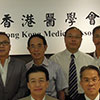 |
 |
 |
The Chartered Institute of Logistics and Transport in Hong Kong (CILTHK)
Comprising about 1 800 members including experienced managers, government staff, public and private sector corporations and consultancies, the Chartered Institute of Logistics and Transport in Hong Kong (CILTHK) encompasses a diverse spectrum of industries including air, sea and land, for both passengers and freight transportation. The CILTHK regularly organises seminars, forums, conferences, visits and other Continuous Professional Development programmes and events for members. Additionally, it operates a code of conduct with the objective of upholding professional industry standards. The CILTHK also participates in public committees and advisory bodies to comment on transport and logistics-related issues for the Government. In August 2001, the CILTHK joined the Road Safety Council as an active member, taking up roles on the Road Safety Campaign Committee and the Road Safety Research Committee. On a regular basis, the CILTHK works closely with the Council and other government departments to improve road safety and ensure that road safety messages reach the industry. For further information, please visit: http://www.cilt.org.hk
Hong Kong Automobile Association (HKAA)
As a member of the Road Safety Council, the Hong Kong Automobile Association (HKAA) has long provided valuable commentary to assist both the Council and the Government in developing new legislation, improving road quality, devising new road safety measures and handling various traffic aspects related to the general protection of road users. The Association is represented on the Council, the Road Safety Research Committee, the Road Safety Campaign Committee and the Speed Limit Review Working Group. Founded in 1918, HKAA will be celebrating its 100th anniversary in 2018! HKAA is a not-for-profit organisation that serves members and road users in Hong Kong. The Association also promotes road safety, assisting road safety campaigns and road safety carnivals organised by district councils. HKAA supports environmental protection, and is devoted to the creation of a superior driving and living environment for Hong Kong residents. HKAA is a member of the Federation Internationale de l’Automobile (FIA) and the Federation Internationale de Motocyclisme (FIM). As the relevant national sports association (NSA), HKAA is the only organisation authorised to issue racing licences in Hong Kong for motor racing competition. HKAA has been involved in motorsport since the 1950s and sanctioned the 2016 FIA Formula E Hong Kong ePrix on the Central Harbourfront, the first instance of such an international motorsport event held in Hong Kong. For further information, please visit: http://www.hkaa.com.hk or Like our Facebook fan page: HKAA
Hong Kong Federation of Insurers (HKFI)
The Hong Kong Federation of Insurers (HKFI) comprises 136 member companies and is recognised by the Government as the representative body of the insurance industry. It consists of two councils: the General Insurance Council and the Life Insurance Council. Matters related to motor insurance are in the purview of the Accident Insurance Association, which is established under the General Insurance Council. The HKFI liaises with the Office of Commissioner of Insurance on legislative and industry matters, and is committed to improving the professionalism of the insurance industry through promotion and refinement of its self-regulatory framework. The HKFI continues to support Road Safety Council activities and initiatives. The HKFI website (www.hkfi.org.hk) provides a link to the Road Safety Council website, providing drivers with useful information on motor insurance, including third-party risks insurance, motor insurance cover under adverse weather conditions, what to do after a car accident occurs and other related topics. The HKFI holds a consistently firm position against drink driving and drug driving. The HKFI’s dedicated Facebook fanpage, “HKFI Smart Union 保聯同學會” (www.facebook.com/HKFI.SmartUnion/) shares information relating to motor insurance and safety tips for motorists and the public. In 2014, HKFI launched the inaugural Hong Kong Insurance Awards to raise standards across the industry by acknowledging top-notch performance and innovation. This year, HKFI is running the fourth Hong Kong Insurance Awards (www.hkfi.org.hk/hkia/index.html) and is confident that the Awards will encourage more professional services and innovative ideas to better serve the insured public.
The Hong Kong Medical Association (HKMA)
Formerly known as the Hong Kong Chinese Medical Association, the Hong Kong Medical Association (HKMA) was founded in 1920, and aims to improve medical standards in Hong Kong. At the same time, it provides a platform to maintain friendly and professional relations with registered medical practitioners. With its motto: ‘To Safeguard the Health of the People’, the HKMA has over 10 000 members. Its work centres on the dissemination of medical knowledge, encompassing information regarding the care and wellbeing of road users. In this respect, the HKMA offers medical advice to drivers on the side effects of medication and other safety topics. Medical educational programmes, provided by a dedicated team of volunteer doctors, help publicising the risks of drink driving and drug driving. Press releases, publications, radio and TV programmes, lectures and exhibitions are included in the HKMA programme of activities to distribute life-saving messages. The Association’s activities, including commentary on controversial medical matters, are conveyed through a monthly newsletter. To keep abreast of the latest global developments in road safety research, the Council leverages the HKMA’s affiliation with many international medical groups, including ties to the World Medical Association, the Confederation of Medical Associations in Asia and Oceania, and the Hong Kong Pharmacy and Poisons Board. For further information, please visit: http://www.hkma.org
The Hong Kong Road Safety Association (HKRSA) / Hong Kong Road Safety Patrol (HKRSP)
Founded in 1961, the Hong Kong Road Safety Association (HKRSA) is a voluntary organisation dedicated to the promotion of pedestrian safety. In 1963, the Hong Kong Road Safety Patrol (HKRSP) was established to focus on student pedestrian safety in areas where young people travel to and from school with inadequate road crossing facilities and to assist the Police to publicise road safety issues. As at December 2016, the HKRSP had a membership of 11 890, including students from 323 kindergartens, primary and secondary schools, as well as senior citizens from elderly centres. In addition, 1 601 volunteers serve as safety leaders. In 2016 the HKRSP participated in a number of road safety campaigns and community events. It also provided regulatory and traffic-flow services, social services and spearheaded road safety education among students. Student members who share the mission to promote school road safety education also serve the community in the important role of Road Safety Ambassadors. The HKRSP has also reached out to the Mainland by sharing its experience and expertise with cities and provinces, and mutually supporting the promotion of road safety awareness and the promotion of road safety patrols in schools. The HKRSA and HKRSP cooperate closely with the Police, the Council, Education Bureau, Social Welfare Department and Home Affairs Bureau in common pursuit of a Hong Kong that is safe for road users. For further information, please visit: http://www.rsa.org.hk
Institute of Advanced Motorists Hong Kong (IAMHK)
The Institute of Advanced Motorists Hong Kong (IAMHK) was established in 1961 and is now in its 56th year. The aim of IAMHK is to enhance road safety in Hong Kong. Its goal is to promote safe driving skills and responsible driving attitudes, and to provide training intended to improve the standard of driving. IAMHK is an active member of the Road Safety Council (RSC) and represented on its Road Safety Research Committee, Road Safety Campaign Committee and Working Group on Speed Review. As a non-profit organization, the IAMHK conducts advanced driving training courses and seminars in Hong Kong, Macau and Mainland China, delivered by our certified trainers. We welcome all drivers to participate in the driving programme and advanced driving tests, with the aim to become an advanced driver! IAMHK also organises various driving competitions in Hong Kong and in the Mainland, including the ‘Trophy for the Commissioner for Transport’, ‘A Glass of Water’ safe driving competition, ‘Treasure Hunt’ event and ‘economy driving’ competitions, in various categories including private cars/articulated vehicles/motorcycles and other vehicles. We will continue to work on these principles as we believe that the more advanced and responsible drivers there are on the road, the safer the environment is for all drivers and road users. For further information, please visit: http://www.iamhk.org/
Traffic Accident
Statistics
The Council’s programmes and direction are formulated with reference to accident trends and common accident contributory factors. To this end, traffic accident statistics and trends are carefully analysed to determine appropriate measures to mitigate and prevent traffic accidents.
2016 Statistics
An analysis of Hong Kong’s traffic accident statistics for 2016 reveals that 16 099 traffic accidents involved injuries, with a total of 20 132 casualties. On average, 44 traffic accidents with injuries occurred each day during the year and about two to three people were killed each week. Compared with the previous year, the number of accidents and the number of casualties decreased slightly by 0.44% and 1.22% respectively. Categorising accidents by collision type reveals that in 2016 the number of vehicle collisions involving pedestrians decreased from 3 218 cases in 2015 to 3 172 cases in 2016. However, cases involving one vehicle colliding with another increased from 7 098 cases in 2015 to 7 507 cases in 2016. While there has not been any significant change in the past decade in the number of traffic accidents involving injuries, there is a downward trend in fatalities. A total of 132 people were killed in traffic accidents in 2016. The Council studies causes and consequences of traffic accidents and maintains a comprehensive traffic accident database to help formulate appropriate road safety strategies. Clearly, pedestrians consistently suffer the highest number of fatalities while private cars are the group most commonly involved in accidents. Of the 25 658 vehicles involved in traffic accidents in 2016, private cars accounted for 8 207, compared with 4 493 taxis, 2 947 light goods vehicles, 2 722 public buses, 2 355 motorcycles, 2 238 bicycles and 2 696 other vehicle types.
Impact of Road Conditions
Statistics show that among injuries related to traffic accidents, 27% occurred at road junctions and 26% occurred at pedestrian crossings. Some 29% of traffic accidents happened at night while another five percent occurred around dawn or dusk.
Top five contributory factors in traffic accidents 2016 (from four perspectives)
I. Driver
Contributory Factors |
No. of Drivers |
Driving inattentively |
4 512 |
Lost control of vehicle |
1 912 |
Driving too close to vehicle in front |
1 749 |
Careless lane changing |
1 276 |
To avoid collision or otherwise : swerving/stopping suddenly |
685 |
II. Casualty (Passenger or Pedestrian)
Contributory Factors |
No. of Casualties |
Passenger lost balance, elsewhere other than on stairway of bus |
662 |
Pedestrian inattentiveness |
492 |
Crossing road heedless of traffic (other than at crossing) |
325 |
Passenger lost balance, on stairway of bus |
272 |
Lost balance/fell down when boarding/alighting from vehicle |
182 |
III. Vehicle
Contributory Factors |
No. of Vehicles |
Unidentified vehicle (hit and run) |
205 |
Mechanical defect |
54 |
Tyre blown out before impact |
11 |
Defective or illegal tyre |
10 |
Broken down with hazard warning lights unlit |
6 |
IV. Environment
Contributory Factors |
No. of Accidents |
Pedestrian negligence |
265 |
Object or animal in road |
140 |
Slippery road (caused by weather) |
94 |
Slippery road (not related to weather) |
65 |
Steep slope |
53 |
The Way
Forward
Looking Ahead
The Road Safety Council actively assists the Hong Kong Special Administrative Region Government in pursuit of the vision, ‘Zero Accidents on the Road, Hong Kong’s Goal’. With rising levels of vehicle ownership and a growing population, traffic volumes on our roads are expected to continue to increase. The Council will continue to enhance road safety through a three-pronged strategy:– public engagement, road engineering and proactive enforcement to make our roads and community safer.
Spreading the Safety Message
The Council conducts publicity campaigns to enhance public awareness of its five road safety themes – ‘Elderly Pedestrian Safety’, ‘Cycling Safety’, ‘Anti–Drink Driving and Anti–Drug Driving’, ‘Driving Attentively’ and ‘Student Pedestrian Safety’ – in order to encourage the public to play its part in ensuring that every road user is safe. Road safety publicity materials are disseminated through various media platforms, including the television, radio, the Council website, YouTube and video walls. Promotional posters are displayed at MTR stations and leaflets are distributed through educational publicity events and campaigns; banners are hung at the flyovers of main thoroughfares and alongside cycling tracks. Every year, the Council holds an Anniversary Ceremony to highlight the selected road safety theme of the year and to maximise the spread of road safety messages. The educational video, ‘Safe Cycling: Rules and Tips’ featuring key safety messages and illustrating proper cycling techniques on roads and cycle tracks will continue to be broadcast on various channels and is also accessible via the websites of the Council and the Transport Department. The Council’s website is updated with the latest news on road safety publicity and campaigns, and other pertinent information. This Annual Report, which details the Council’s activities throughout the year, is published along with a series of road safety bulletins focused on specific road safety themes.
Educating Target Groups
The Transport Department disseminates road safety messages to professional drivers through newsletters, seminars, workshops and regular meetings held with public transport operators. It will continue to conduct the ‘Safe Driving and Health Campaign’ to enhance safe driving skills and health awareness among commercial vehicle drivers. As at present, regular Road Safety Bulletins on specific road safety subjects will be published and distributed to the public. In addition, the Police conduct seminars at primary and secondary schools and carry out street education at traffic accident black spots and boundary control points to reach target groups and raise their awareness. The Road Safety Bus, manned by police officers, is an effective platform to convey road safety messages to children at kindergartens and the elderly at communal homes. To further enhance road safety awareness among the elderly, a phone-in road safety quiz competition will continue to be held via radio channels. Recognising that road safety education should begin at an early age, the Council works closely with the Hong Kong Road Safety Association to engage young students in road safety activities and publicity campaigns in order to nurture them to be responsible road users. The Council has also developed various training materials that are given to youngsters in the community during road safety lectures. Training courses and lectures on cycling safety and skills are also part of the Council’s community youth awareness programme in primary and secondary schools. The cycling training programme will continue to be conducted to improve students’ cycling skills and safety awareness in view of increasing cycling participation. The Education Bureau conveys road safety messages and cultivates responsibility and civic awareness among students through the school curriculum. Educational television programmes and related learning and teaching resources with an emphasis on positive values and attitudes and proper behaviour among road users are developed to facilitate the promotion of road safety education in schools. Statistics suggest that elderly people are the most vulnerable to traffic accidents. Service units of the Social Welfare Department and non-governmental organisations will continue to include road safety as a key message in their community programmes for the elderly. Bulletins and printed materials will be distributed to the public. The Police review the Selected Traffic Enforcement Priorities every year so as to respond to the latest road safety situations, change the undesirable behaviours of road users that can lead to accidents and ensure that everyone takes responsibility to make sure every road user is safe.
Annex
Acknowledgement
This Annual Report 2016 was prepared by:
Government Bureaux and Departments:
-Education Bureau -Transport and Housing Bureau -Highways Department -Home Affairs Department -Hong Kong Police Force -Information Services Department -Transport Department
Non-governmental Organisations:
-The Hong Kong Road Safety Association -Hong Kong Automobile Association -Hong Kong Federation of Insurers -Institute of Advanced Motorists Hong Kong -The Chartered Institute of Logistics and Transport in Hong Kong -The Hong Kong Medical Association
